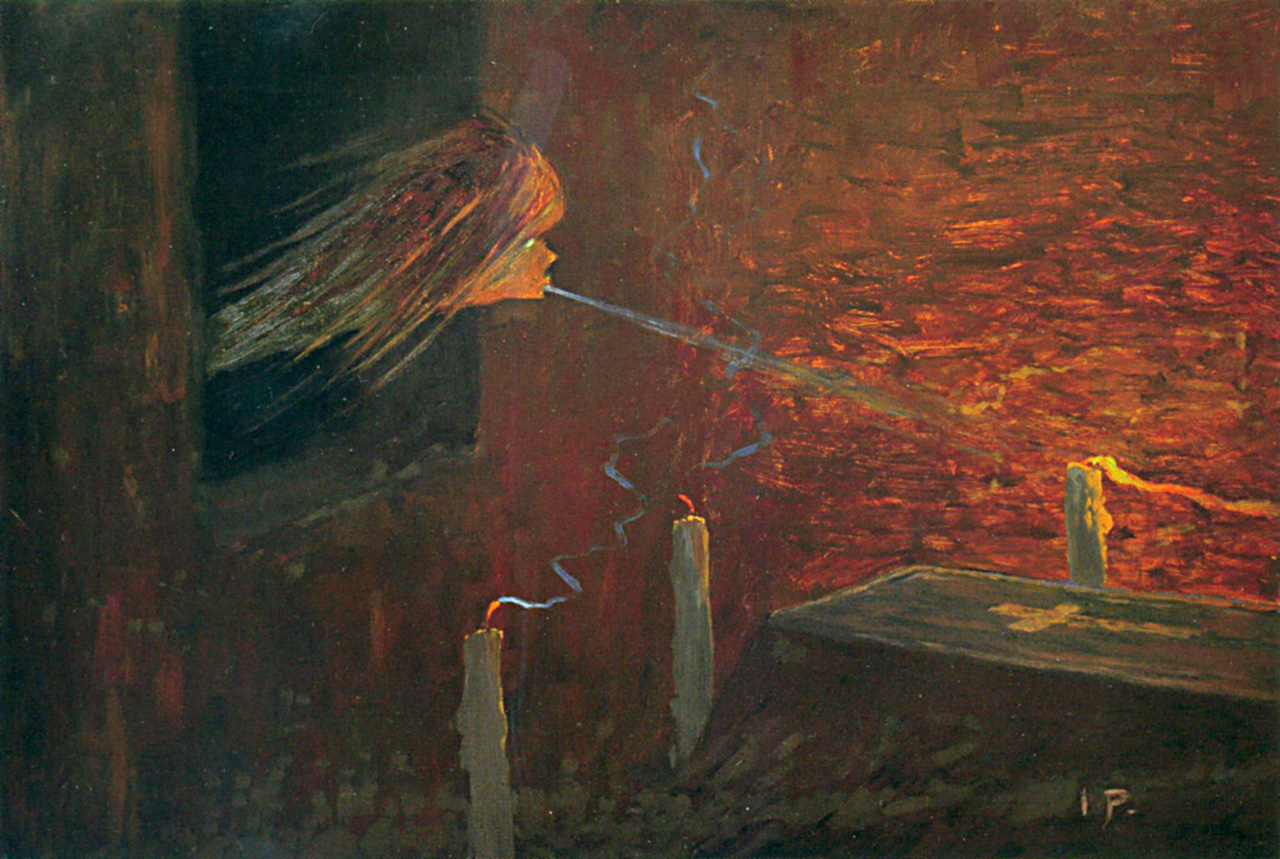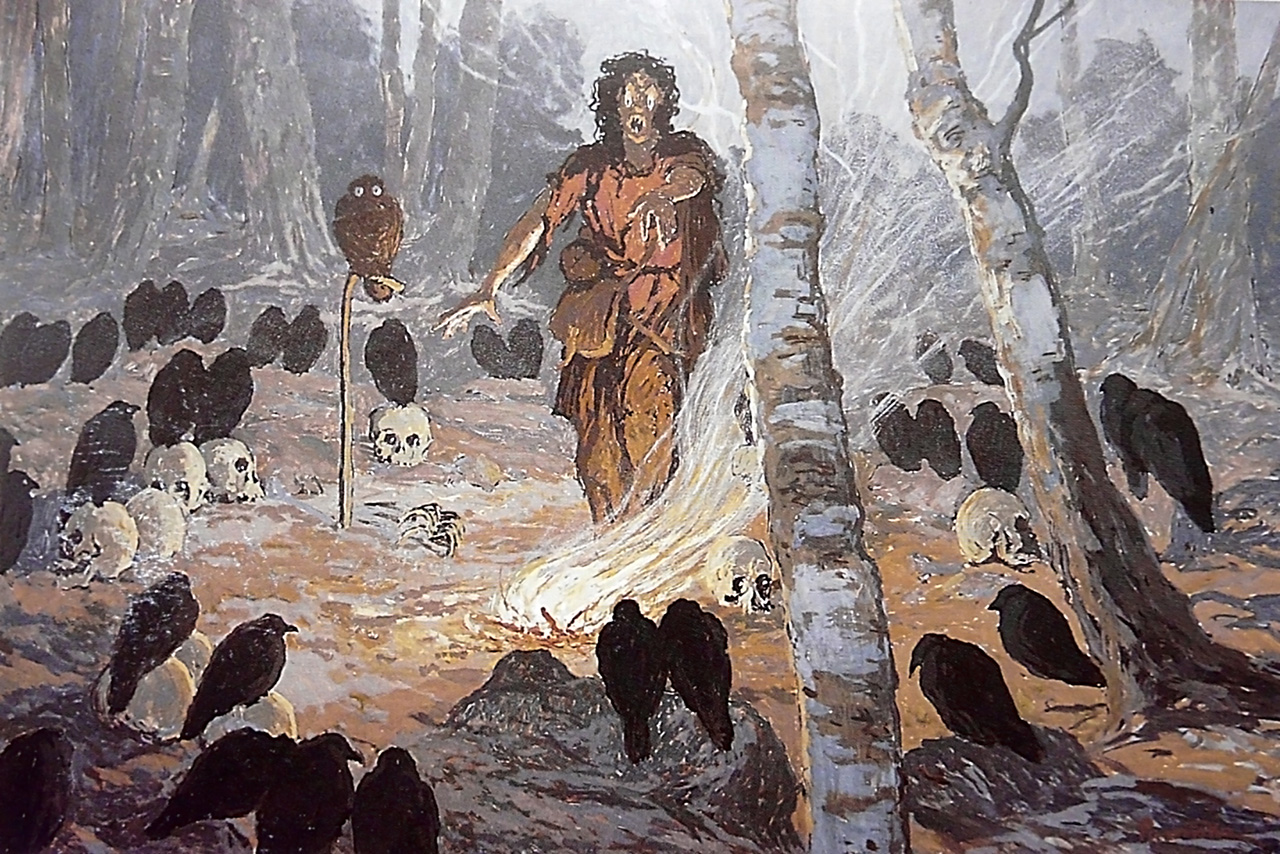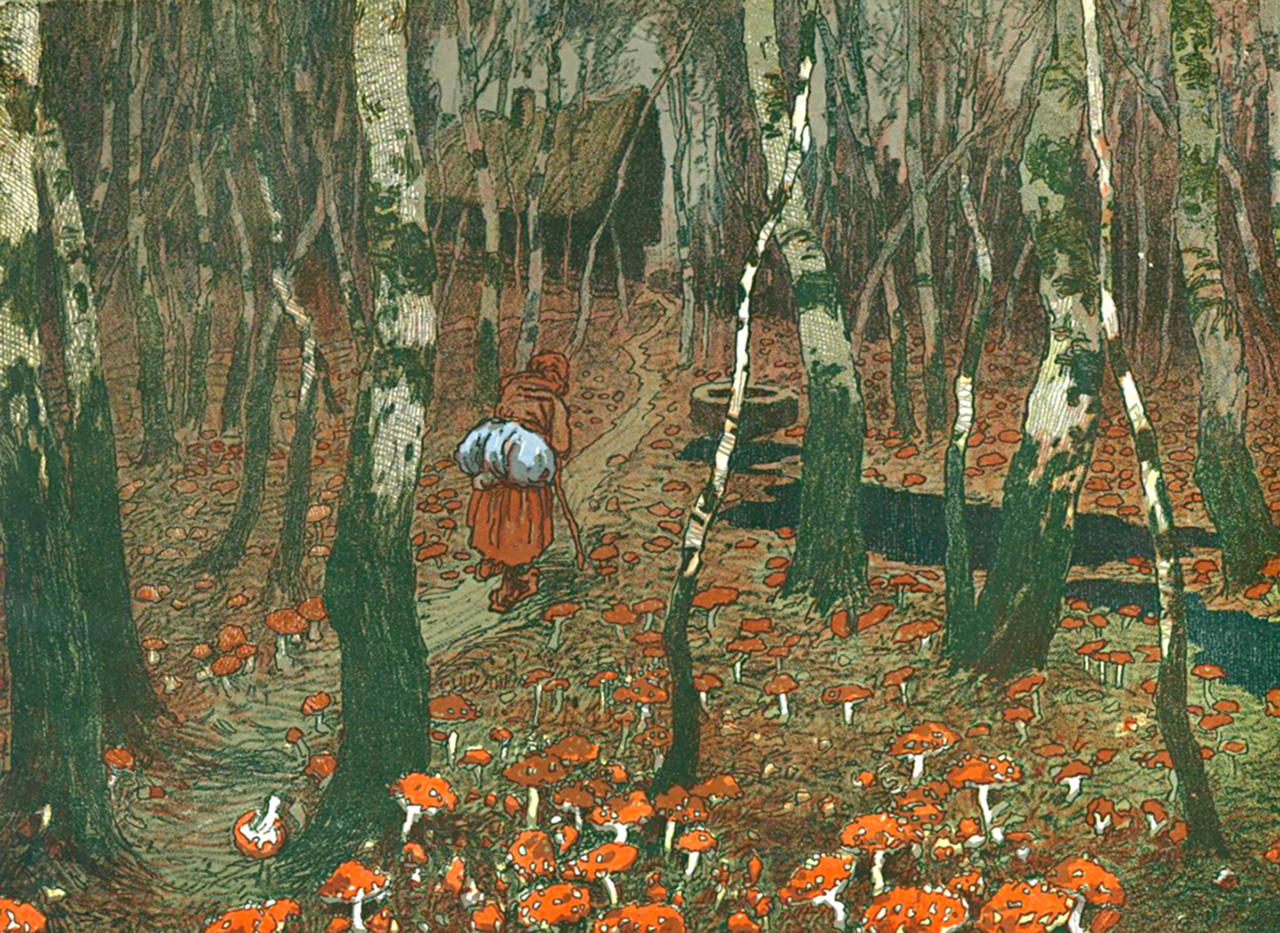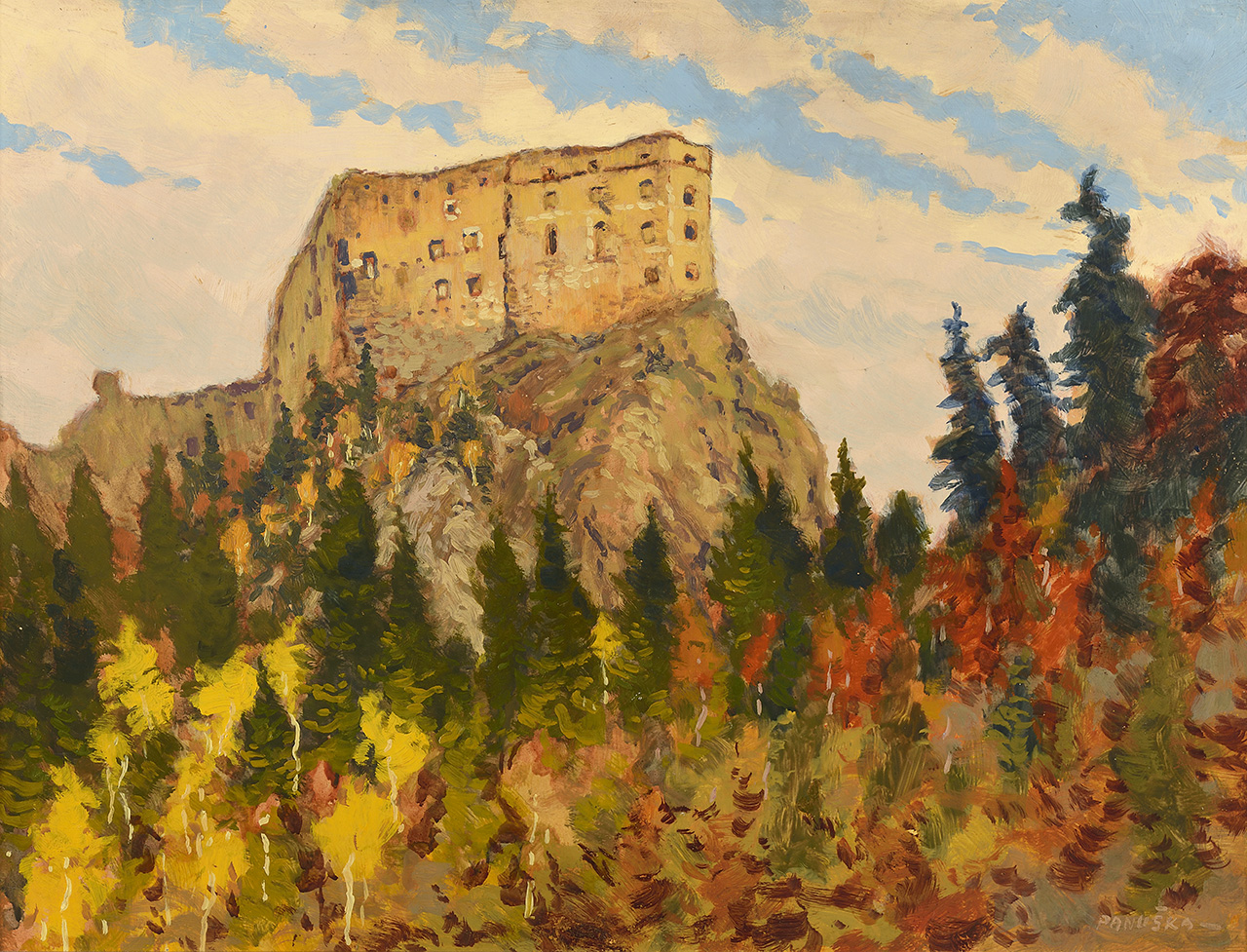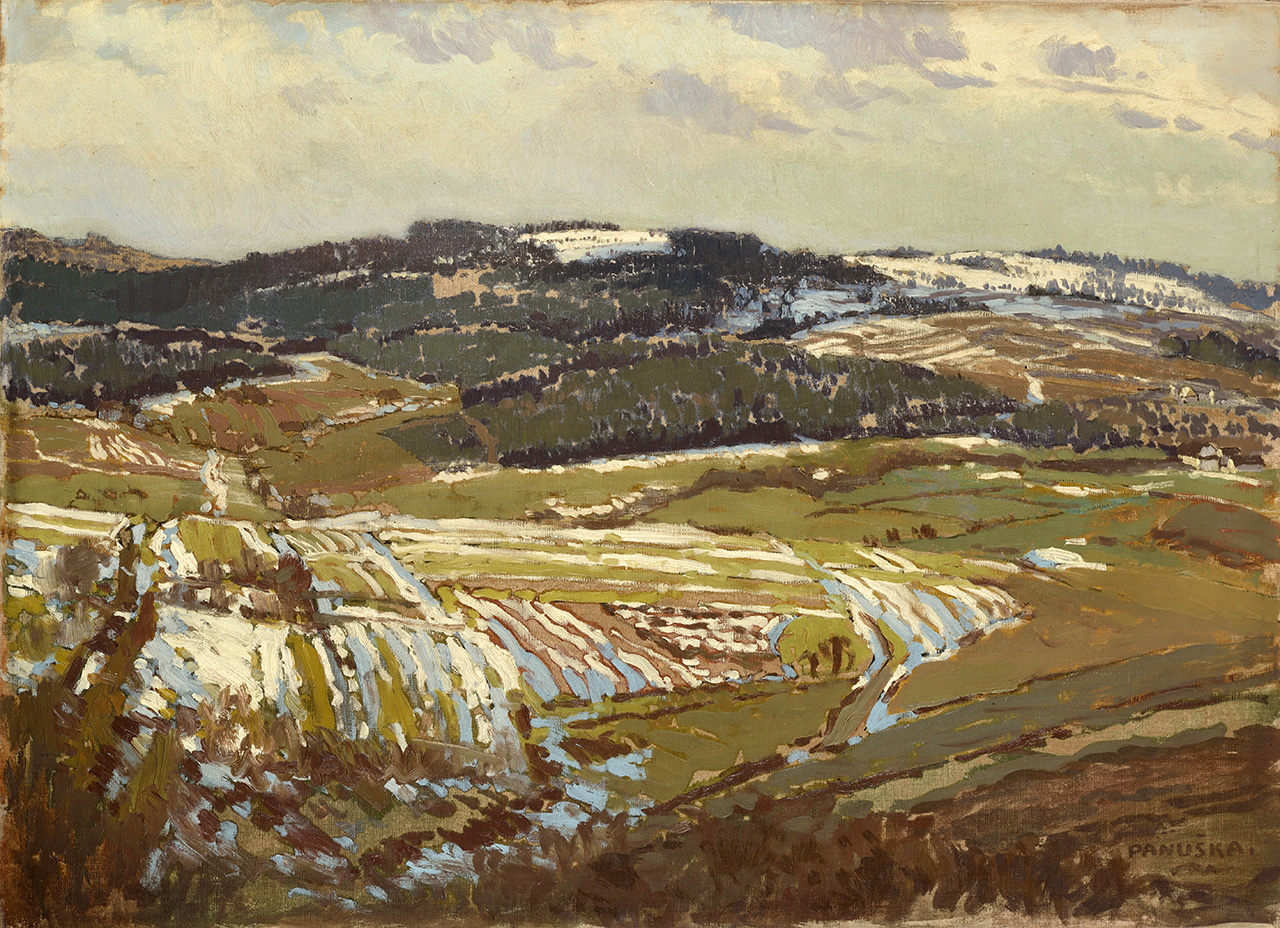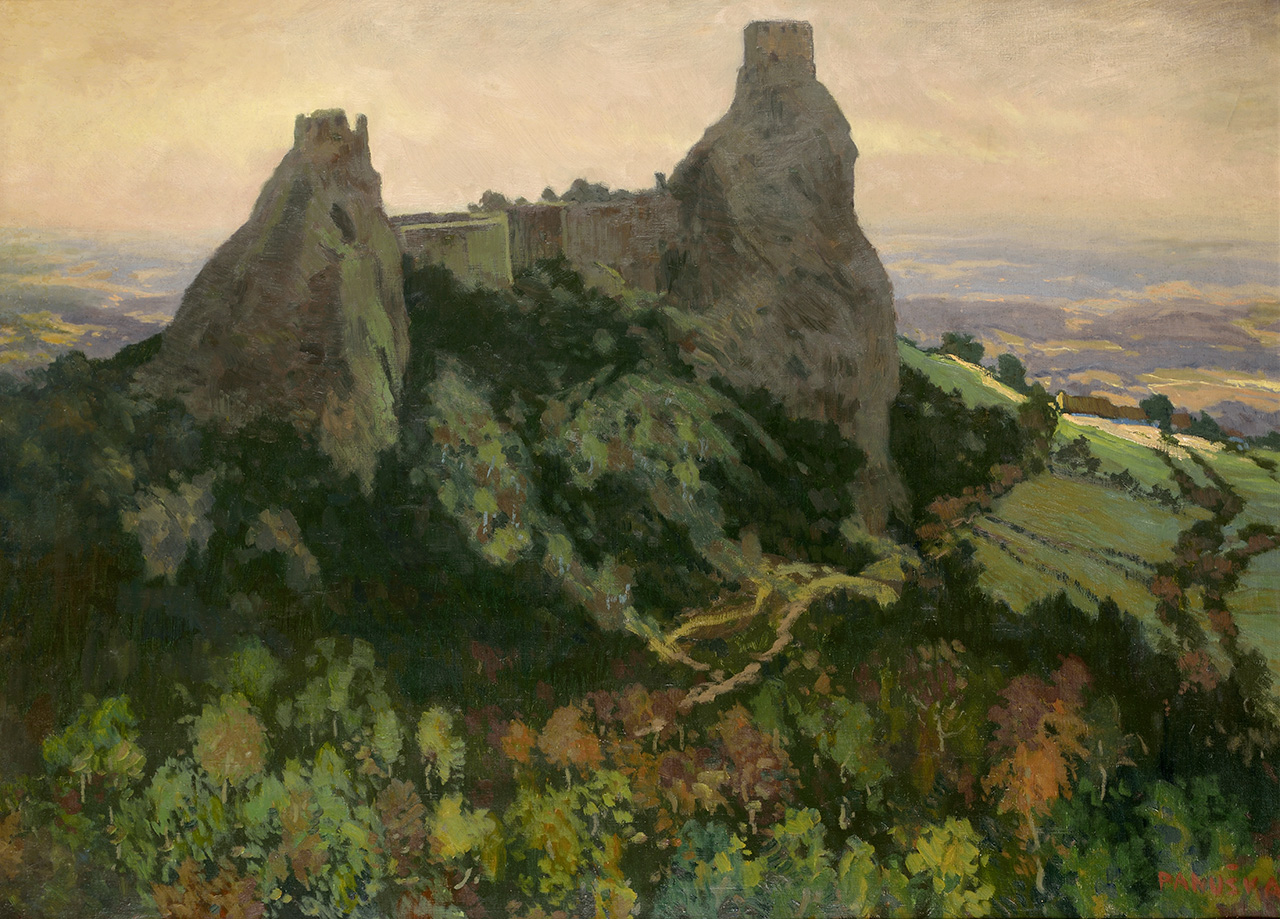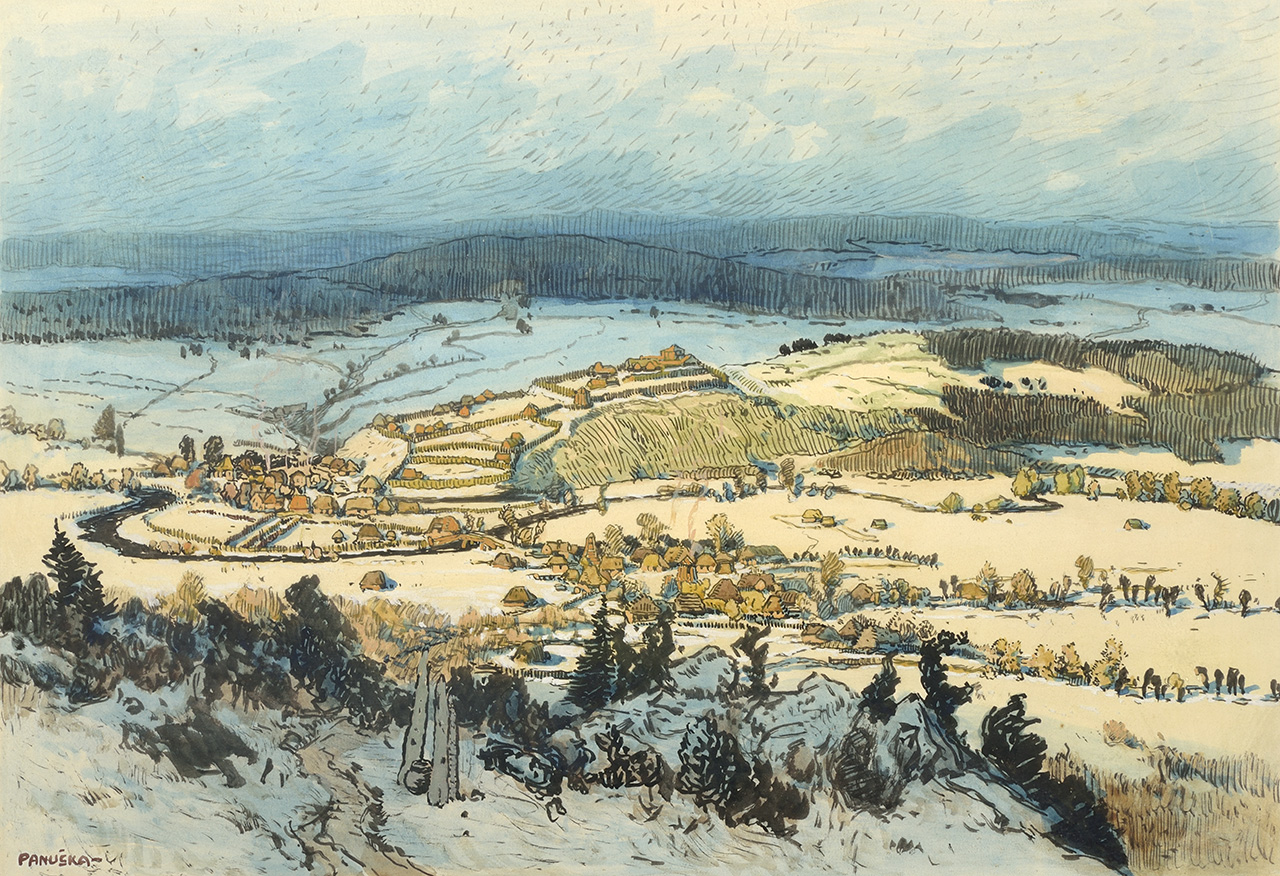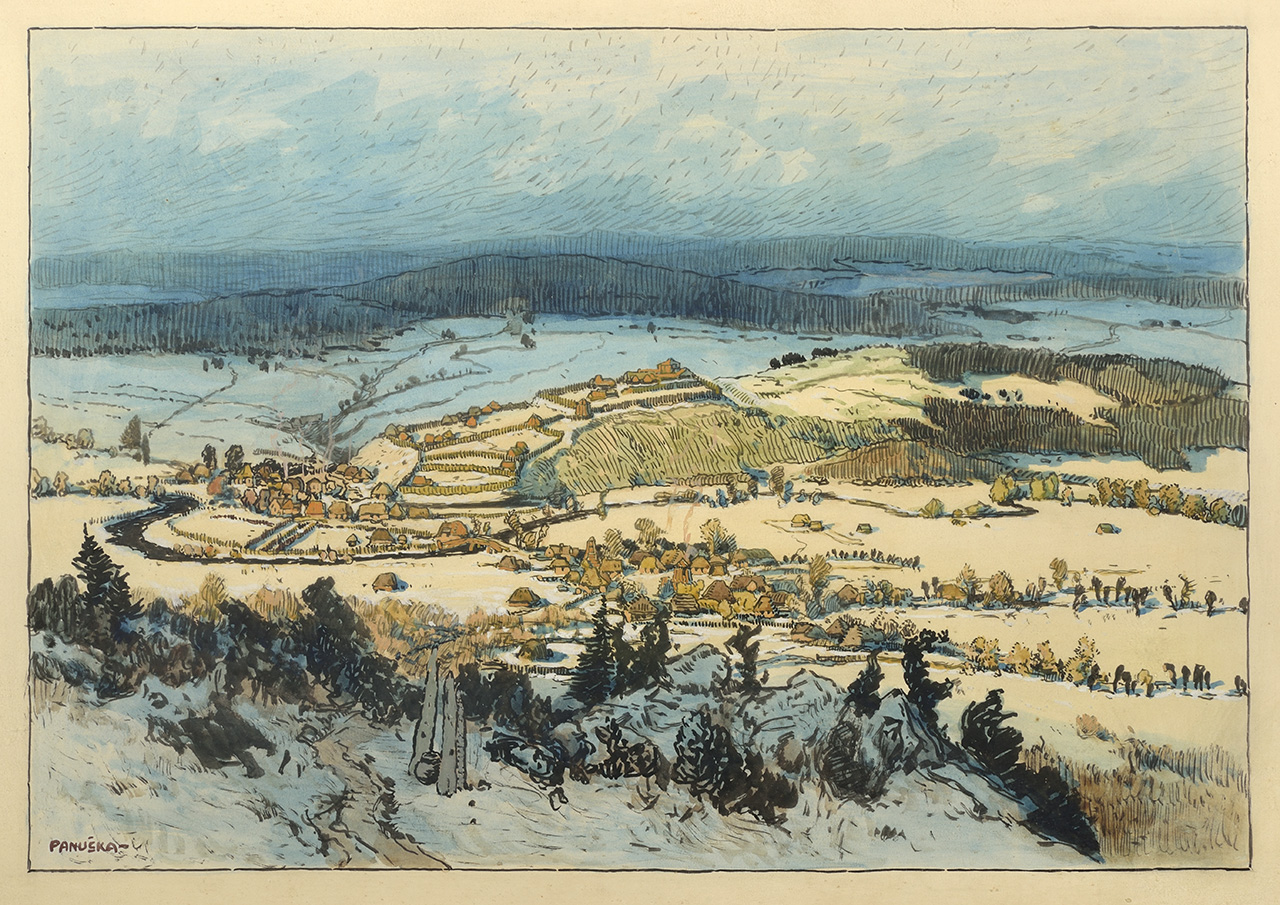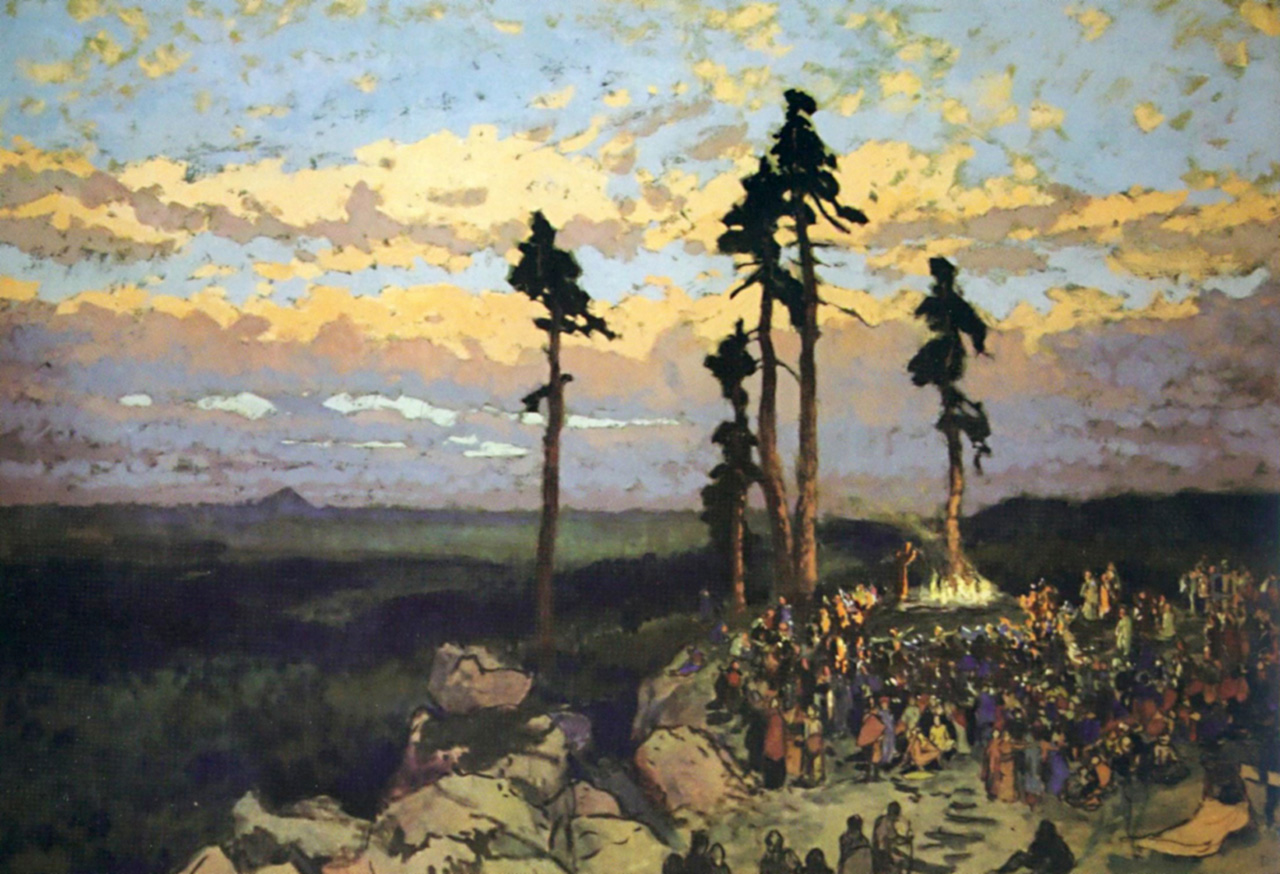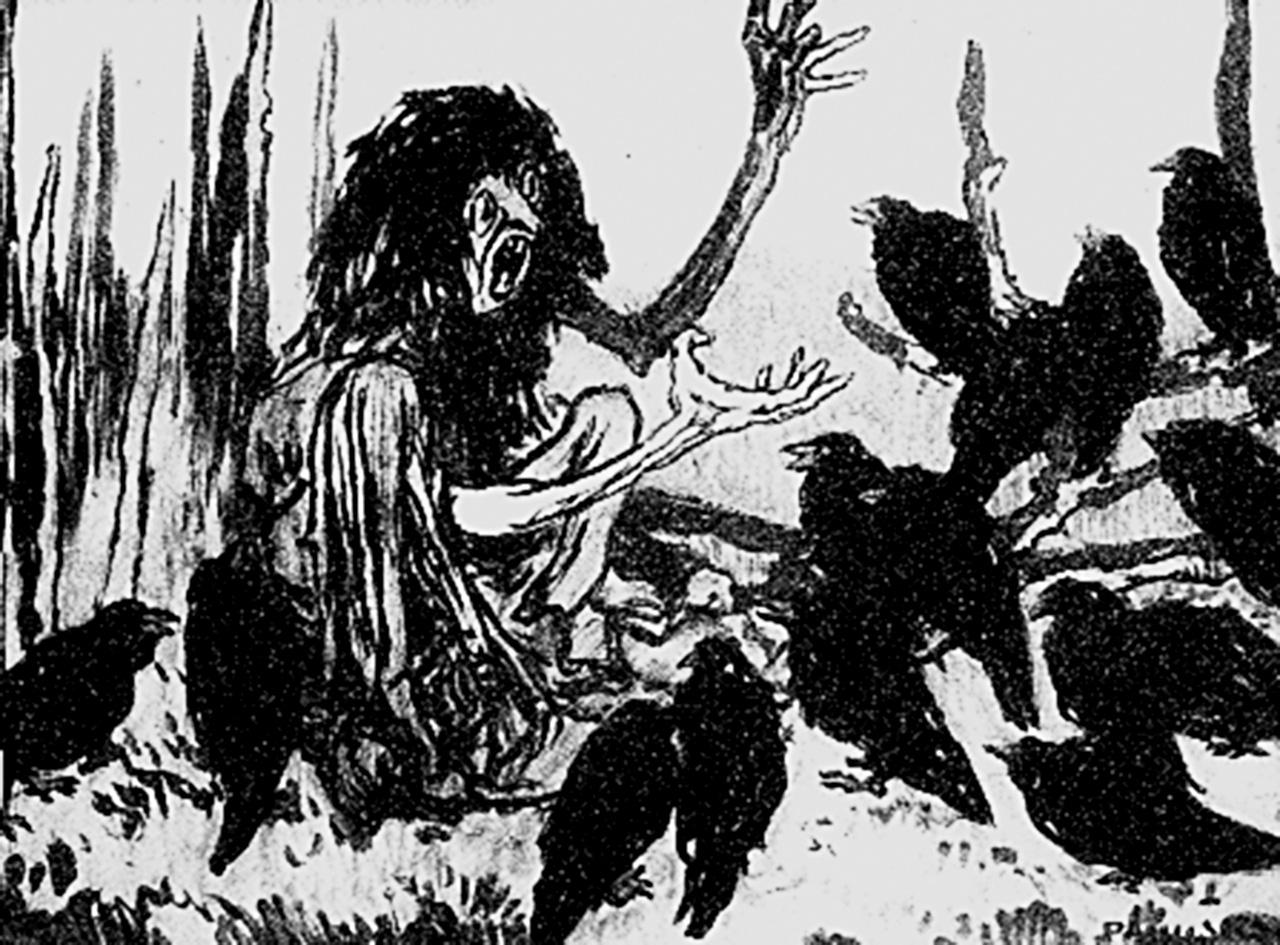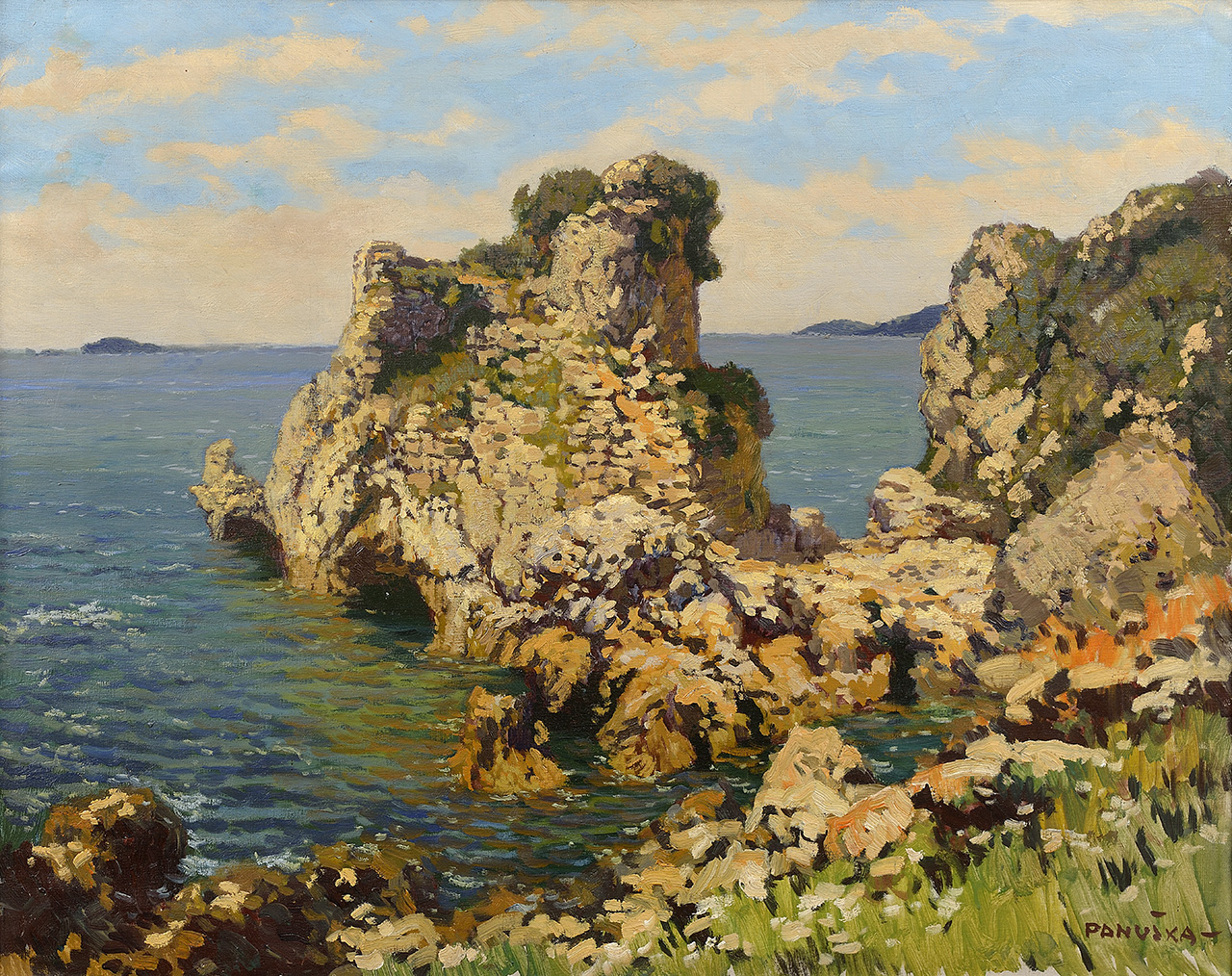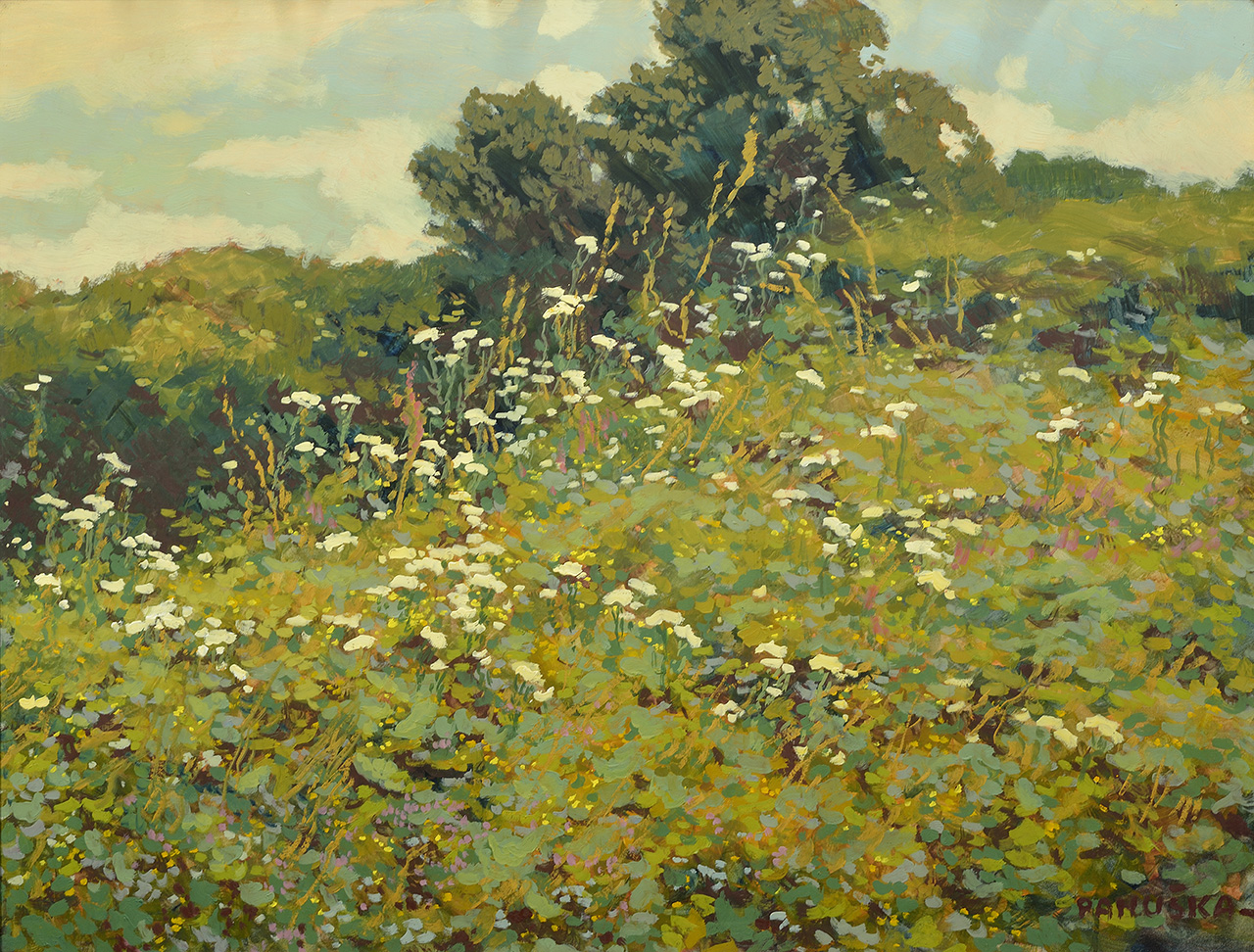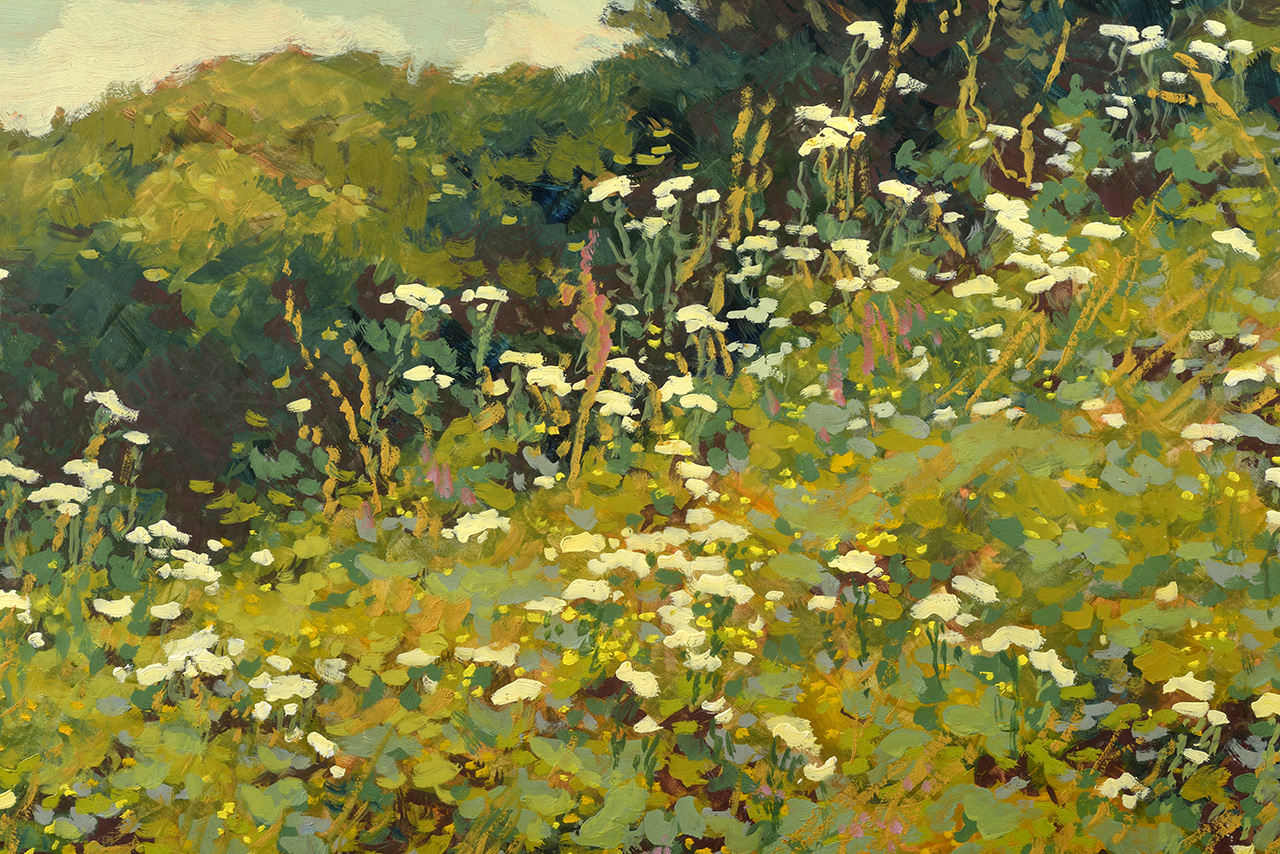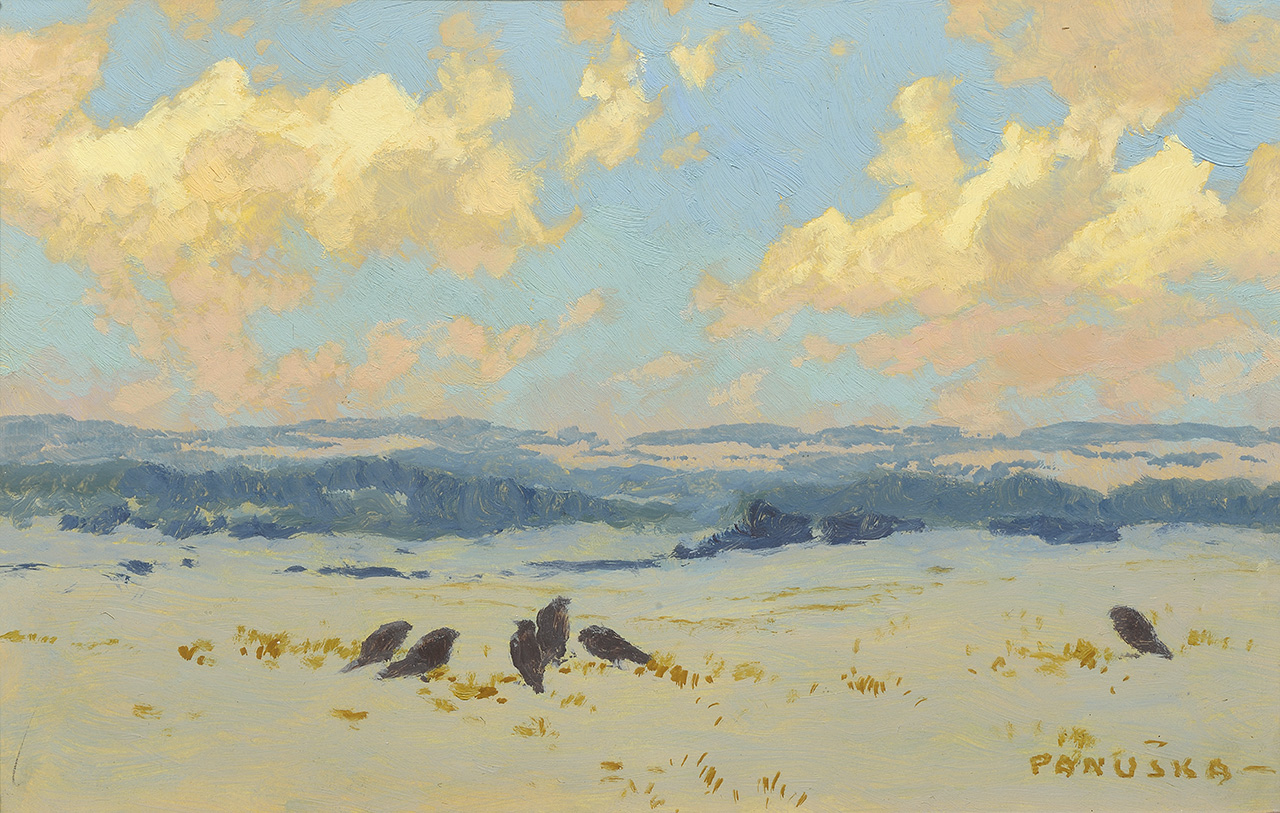Czech painter Jaroslav Panuška (1872 Hořovice — 1958 Kochánov) belongs to the leading representatives of the so-called Mařák’s School. Julius Mařák taught at the Prague Academy between 1887 and 1889; during this time almost 50 pupils studied at his landscape painting studio. Mařák wanted his students to understand the charms of nature, which were to be depicted unvarnished, i.e. realistically, nevertheless, with a certain “mood” expressing the given season and atmospheric situation. In the painting, ideally, the student was supposed to capture the “soul” of the landscape, i.e. a feeling provoked by viewing the beauty of the landscape. Panuška fully identified with the aesthetics of his teacher and was faithful to it for the rest of his life. This fact had an impact on the reception of his work by Czech art criticism. Until the end of the 1910s, he was appreciated for his decadent and symbolist works, which were often influenced by Czech fairy-tales. However, since the end of the 1910s, Czech art criticism started preferring avant-garde art and took no interest in Panuška any longer. Public galleries stopped purchasing his works. In Prague, i.e. in the centre of Czech cultural life, he had solo exhibitions only in 1914, 1919 and 1932. Panuška had to sustain a large family through painting, thus a number of his works give the impression of routine painting. Many of his works were created as variations or replicas of the themes requested by art collectors. He also worked in the field of book illustration, applied art (posters, promotional materials), rarely also as a graphic artist. Nevertheless, when he painted with a keen interest, he created remarkable works, thematically based on Czech and Slovak landscape and Dalmatian seaside. His masterpieces equal the paintings of the best Czech landscape painters. Panuška’s oeuvre is extensive; his paintings alone count in thousands. The overwhelming majority of his works can be found in private collections. Only a fraction of his oeuvre is known to the general public, moreover, what is known belongs predominantly to his symbolist-decadent period. These works have recently been presented in exhibitions of Czech art abroad, in Germany, Belgium, Poland and Austria. Panuška’s paintings as well as the artist himself still wait for recognition.
